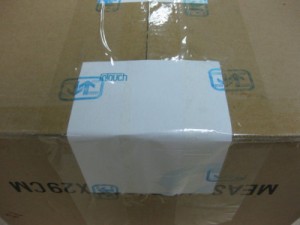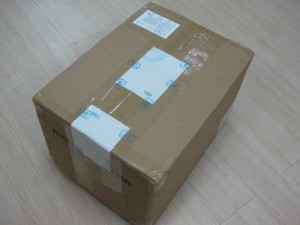If you’re like most buyers, you’ve probably had trouble being sure about a defect just by looking at a photograph in a report. You might have wished you could actually look at the defective product in person to be sure of whether or not it’s serious.
Product Defects are Inevitable in China QC
Whenever an inspector goes out to a factory, he will undoubtedly find defects in the product being manufactured. A certain margin of error is something every client needs to come to terms with when outsourcing to China. It is highly unlikely, especially with human assembly, to get a completely perfect shipment from a factory.
A quality control company’s job is to report on order status and quality so the buyer gets a clear picture of their order. This information helps the buyer work with the supplier to get the margin of error as small as possible so they can make a consistent product. However, just because there is a “defect” by definition doesn’t mean it should always be corrected. Inspectors often find an issue the buyer can’t clearly understand without holding the affected product in their hands.
The Problem with Determining Defect Severity
There is often a struggle between QC inspectors and factories about how serious defects found actually are. And if the report isn’t clear enough, then it can be difficult for you to judge if a reported  defect (scratches, dents, etc.) is serious enough to be a problem. It is very common for products to be labeled as defective for very minor issues many clients would not consider serious enough to warrant holding a shipment.
defect (scratches, dents, etc.) is serious enough to be a problem. It is very common for products to be labeled as defective for very minor issues many clients would not consider serious enough to warrant holding a shipment.
After an inspection, your factory may offer to send you examples of this defect, but beware. Factories will often try to downplay the severity of a defect by sending a sample that is only mildly affected. So if your auditors found scratches that actually ranged from 2mm to 2cm in length, the factory will likely send you samples of the 2-3mm scratches only. By falsely representing the defect found in the product, the factory is sometimes able to convince the buyer that rework is not needed. This can result in you being very disappointed when you receive a shipment of goods that have worse defects than you expected.
The Solution: Request Sealed Defect Samples
In order to make the best judgment call regarding unclear product defects, you should request a sealed sample of the defective product. Ordering a sealed sample of the defective product is a cheap and easy way to gain a better perspective on how bad a defect actually is.
Let your factory and QC Company know that inspectors are allowed to seal defective samples on-site during the inspection. Not only does this prevent the factory from misrepresenting the defects found during inspection, but it costs you nothing. In the end, you are the client and only you can judge how severe a defect you are willing to let slide.
 All inspectors carry materials to seal samples, and a QC company should have explicit procedures on how to seal samples in such a way that any tampering is obvious. An experienced inspector only needs 5 minutes and some paper, pens, stamps and tape to seal defect samples at a factory.
All inspectors carry materials to seal samples, and a QC company should have explicit procedures on how to seal samples in such a way that any tampering is obvious. An experienced inspector only needs 5 minutes and some paper, pens, stamps and tape to seal defect samples at a factory.
From a long term perspective, this practice can also help improve your quality management systems over time as well. If you start collecting defect samples, you can lay out very specific parameters on what is acceptable and unacceptable when it comes to variations on the product. If a certain amount of color variation is acceptable, for instance, then you can use samples as templates, such as “lightest approved” and “darkest approved” that you have signed to be kept on-site at the factory for reference. The factory can use that sample themselves during their own production and internal QC. Also, your China QC inspector won’t be flagging color issues that are actually OK in your book.
Conclusion
Having samples of defects sealed on-site during inspections can be an invaluable resource to you as the buyer. Sealed samples can also limit the back-and-forth between you, the factory and your China QC inspector often needed to clear up confusion. Requesting a sealed defect sample directly from your quality control inspector is the best way for you to understand the severity of the issue because sealed samples:
because sealed samples:
- Cost you nothing extra
- Give you hands-on insight into the actual defects found
- Help clear up disagreements between your factory and QC company; and
- Can become the foundation of a long term tracking of acceptable and unacceptable quality issues
Finally, sealed samples give you the most control over what your final product will look like and help you avoid any unwanted surprises in the end. Make sure to put this invaluable tool to good use next time you find yourself needing product inspection services.






